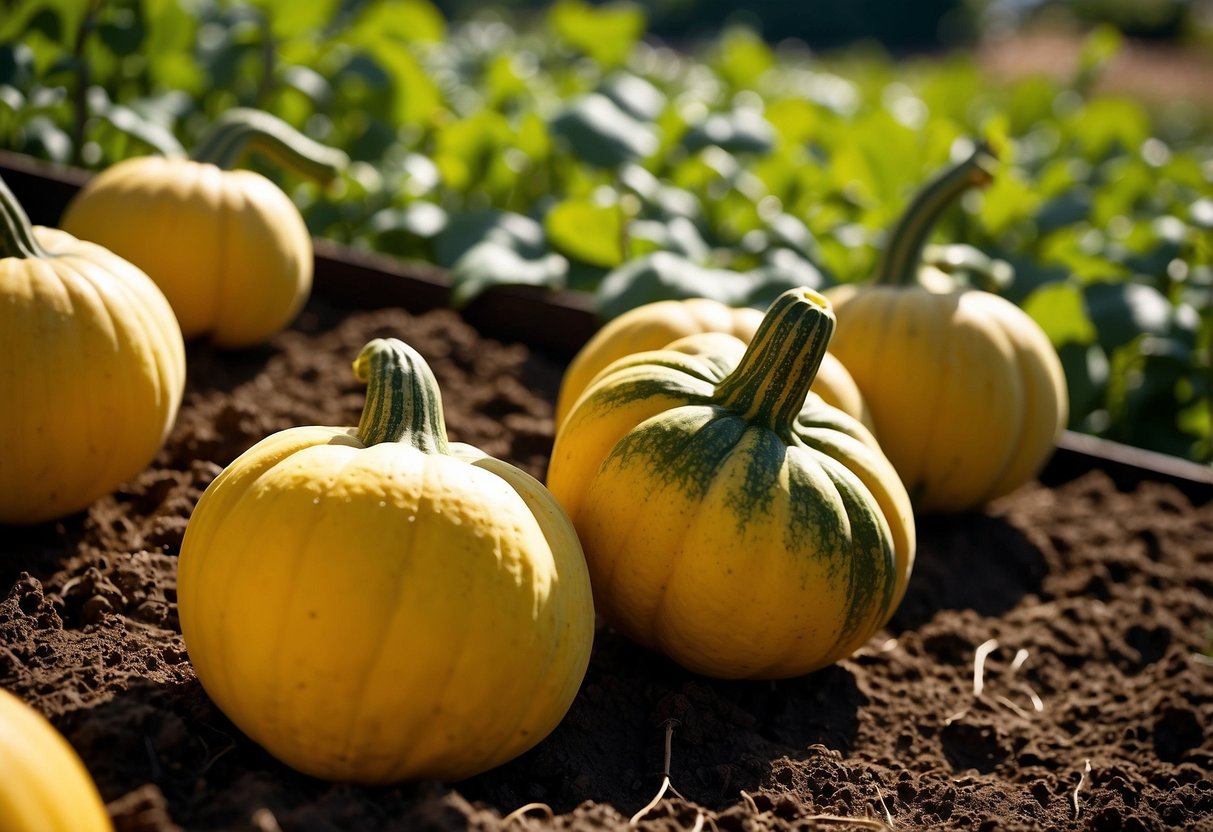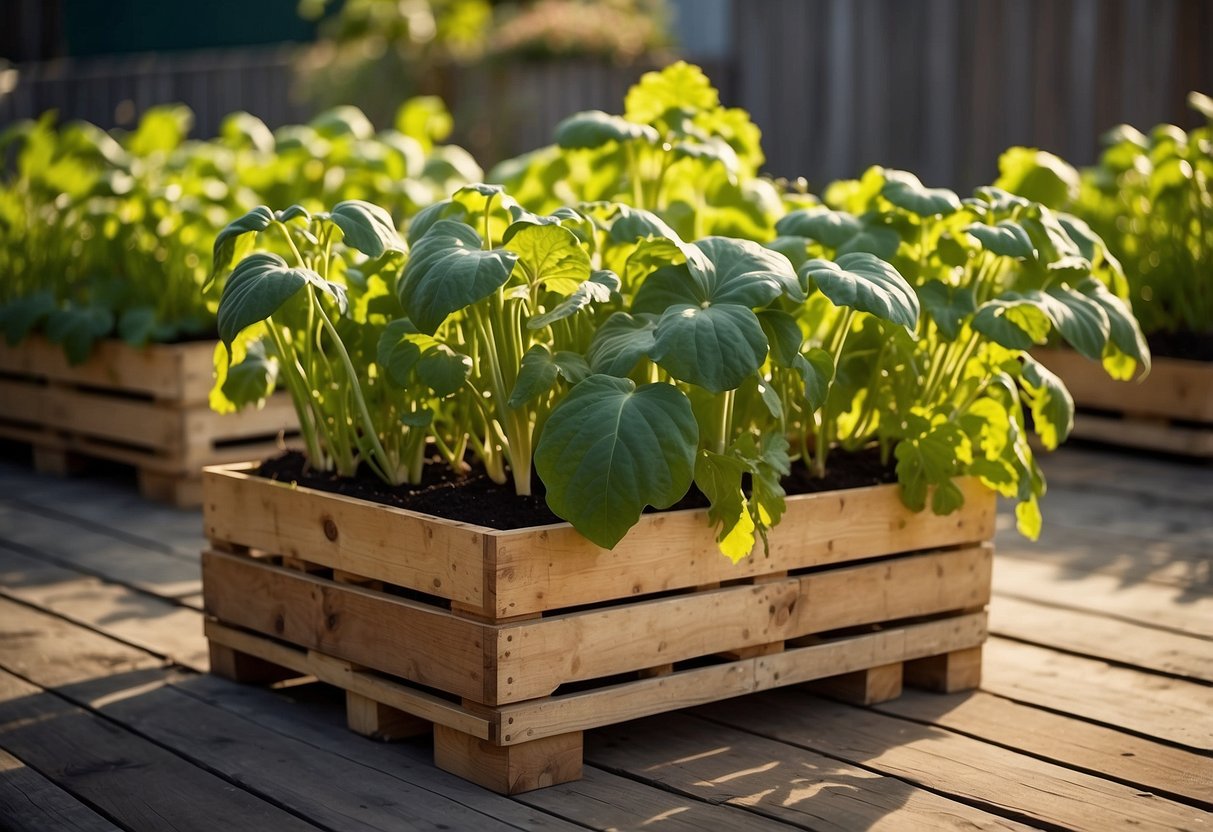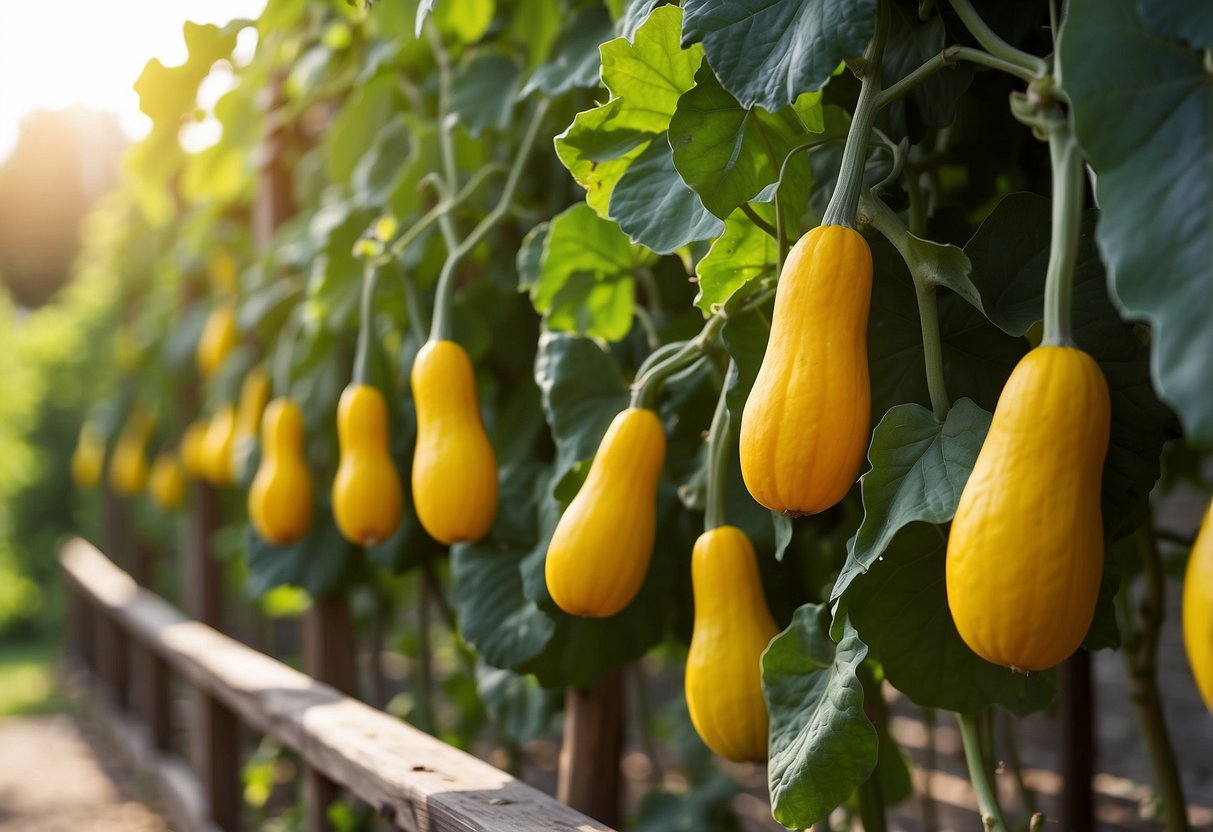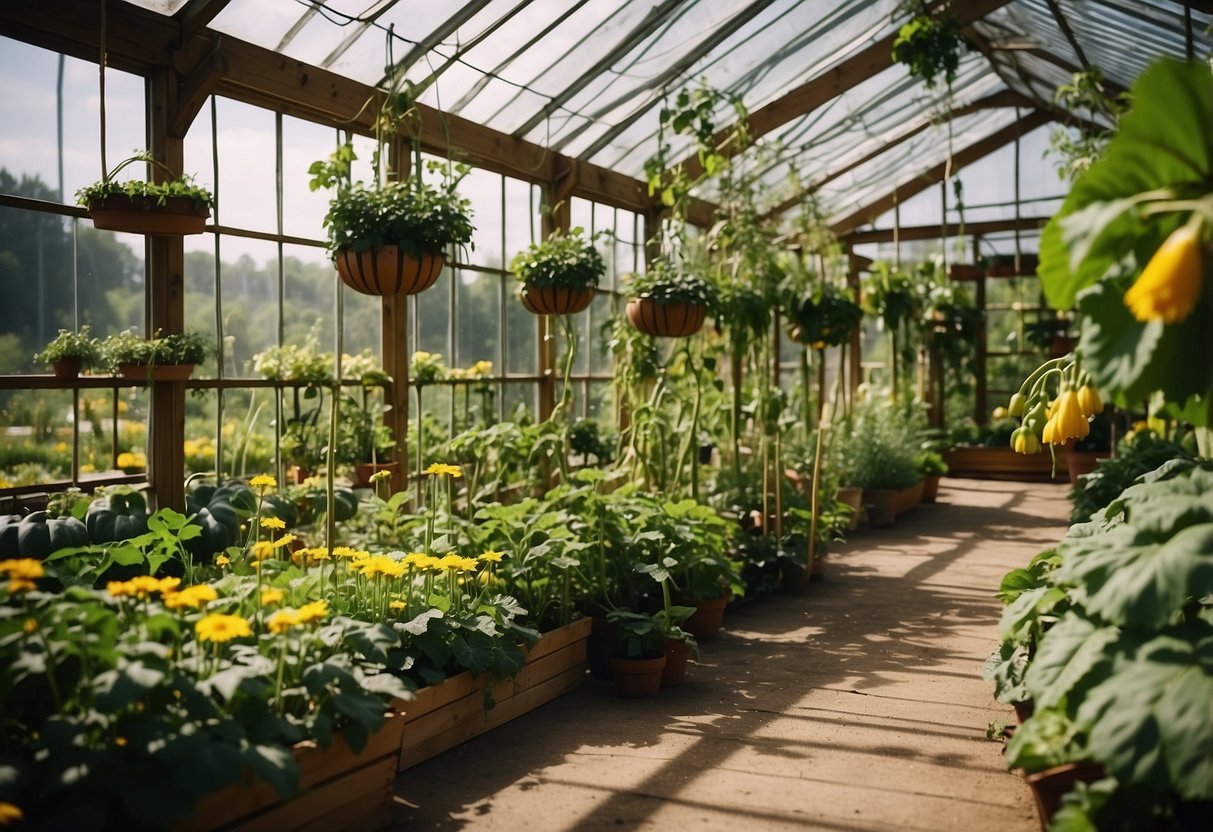Squash Garden Ideas: Creative Tips for a Bountiful Harvest
If you’re looking to maximize your garden space and yield, exploring various squash garden ideas can be a game changer for your gardening journey. From creative trellis systems to cozy raised beds, there are many methods to help you grow healthy and bountiful squash. Each idea offers unique benefits and suits different gardening needs, adding both function and beauty to your outdoor space.

Figuring out the best approach can help you grow squash efficiently while making the most of your available space. Whether you have a large garden or a small balcony, the right squash garden idea can enhance your gardening experience, making it more enjoyable and fruitful. Dive into the world of squash gardening to discover innovative ways that suit your style and space.
1) Spaghetti Squash Arbors

Growing spaghetti squash on arbors is a fun and practical idea. You can save space and keep your garden tidy by training the vines to grow upwards.
Plant the squash seeds at the base of the arbor, spacing them about three feet apart. This method keeps the fruit off the ground, which reduces disease and pest problems.
Your garden will look great, and harvesting will be easier with cleaner fruit. For more tips, check out how to grow spaghetti squash on a trellis.
2) Repurposed Pallet Planters

Using pallets as planters is a great way to garden on a budget. You can turn old wooden pallets into unique planters for your squash.
Simply stack the pallets and fill them with dirt. Plant squash seeds in the gaps, ensuring they have plenty of sunlight and water.
These planters are not only functional but also add a rustic touch to your garden. Check out some gorgeous pallet garden ideas for more inspiration.
3) Hanging Squash Gardens

Hanging squash gardens are a fantastic way to save space in your garden. You can use sturdy containers or baskets to hold the squash plants. Make sure they have good drainage.
Hang the containers from strong supports like beams or hooks. This method keeps the fruit off the ground, reducing the risk of pests and diseases.
Tend to your hanging squash by regularly watering and checking for any signs of trouble. Training the vines upwards helps support the growth and keeps everything neat. This approach is perfect for small gardens or patios, giving you fresh squash even in tight spaces.
4) Squash Trellis Tunnels

Creating squash trellis tunnels can be a fun and practical way to maximize your garden space. These tunnels encourage the vines to grow upwards, saving ground space for other plants.
You can make a squash tunnel using materials like wooden strips, wire fencing, or PVC pipes. This helps keep the fruits off the ground, reducing the chances of pests and diseases.
Squash trellis tunnels also make harvesting easier. You won’t need to bend down as much, and the fruits will be cleaner. Plus, these tunnels can add a charming and visually appealing structure to your garden space.
5) Container Squash Gardening

Container squash gardening is great if you lack garden space. Choose a large container, at least 20-24 inches in diameter and 12-18 inches deep, to give the plant enough space.
Consider adding a trellis for varieties that grow vertically. Ensure your container has good drainage to prevent root rot.
Plant one squash per container to make sure it gets enough nutrients. Add companion plants like marigolds to help deter pests. Keep the soil moist and feed your squash with organic fertilizer every two weeks during the growing season.
6) Raised Bed Squash Gardens

Raised bed squash gardens make gardening easier and more enjoyable. These beds sit above the ground, which helps with planting, maintaining, and harvesting.
Plant your squash seeds directly in the raised bed after the last frost. Make sure the soil temperature is at least 60°F (16°C) for best results.
Keep your squash plants well-watered. Aim for 1-2 inches of water per week. Using a drip irrigation system can save you time.
To help your squash thrive, cover the young plants with row covers. This will protect them from pests and cool nights, helping them grow strong.
7) Squash Companion Planting

Companion planting can make a big difference in your squash garden. For example, planting garlic near your squash helps repel pests like squash bugs and aphids.
Marigolds are another great companion. They attract beneficial insects and add a splash of color to your garden.
Consider planting peas too. They fix nitrogen in the soil, which benefits your squash plants.
Avoid planting cucumbers, as they can compete with squash for nutrients.
8) Squash Archways

Squash archways are a great way to add some vertical gardening to your space. Not only do they look amazing, but they also save room. You can easily build one using PVC pipes or wooden trellises.
PVC pipes are lightweight and durable. You can learn how to build a squash arch with PVC pipes and fencing. Spray paint the PVC to match your garden style.
Wooden trellises offer a rustic, natural look. Using wooden strips and wire fencing, you can create a sturdy frame. This is ideal for raised beds and adds a charming touch to your garden.
9) Vertical Squash Walls

Growing squash vertically on walls can save space in your garden. You can use an A-frame trellis, which is less expensive and mobile, letting you move it yearly. Another option is growing squash on a fence, which also works well.
Make sure to train the vines to grow upward by tying them to your support structure. Check every few days and adjust as needed. Don’t forget, squash thrives in sunny spots with fertile, well-drained soil.
For more details, you can refer to this guide or this article.
10) Greenhouse Squash Growing

Growing squash in a greenhouse can be a rewarding project. Start your squash seeds from late March to late May in small pots. Use pots that are about 3 inches in size and sow each seed 1 inch deep.
Ensure the soil is well-draining and enriched with organic matter. Keep the greenhouse temperature between 65°F (18°C) and 85°F (29°C).
Squash can be grown vertically using a trellis. This helps save space and keep the plants healthy. Train the vines to climb by attaching them to the trellis as they grow.
Choosing The Right Location

To have a successful squash garden, it’s important to pick the best spot in your yard. This involves considering both sunlight and soil conditions to provide your plants with the necessary environment to thrive.
Sunlight Requirements
Squash plants need at least six to eight hours of direct sunlight every day. Choose a location in your garden that receives ample sunlight without interference from large trees or buildings.
If possible, position your squash plants on the south side of your garden. This ensures they get the maximum amount of sunlight throughout the day.
Shady areas can result in poor growth and fewer fruits. Also, because squash has a long growing season, consistent sunlight is crucial for the best yield.
Soil Preparation
Good soil is key to growing healthy squash plants. Squash prefers well-drained, fertile soil. Before planting, enhance your soil with organic matter like compost or well-rotted manure to improve nutrient content and water retention.
Aim for a slightly acidic to neutral pH level. You can test your soil’s pH using a soil test kit; the ideal pH range is about 6.0 to 7.0.
Make sure the soil is loose and not compacted, allowing squash roots to spread easily. Regularly check soil moisture to ensure it remains adequately moist but not waterlogged, which can harm your plants.
For more detailed guidance, visit maximizing yield and garden efficiency.
Types Of Squash For Your Garden

Squash comes in two main categories: summer squash and winter squash. Each type has its own unique qualities and growing requirements.
Summer Squash Varieties
Summer squash is known for its tender skin and fast-growing nature. Popular examples are zucchini and pattypan squash.
- Zucchini: Known for its green, cylindrical shape, zucchini is a superstar in the garden. It grows well in most climates and produces a generous harvest. Harvest when they’re small for the best flavor.
- Round Zucchini: This heirloom variety, also known as Ronde de Nice, is valued for its round shape and speckled green color. It’s best picked when small and tender.
- Pattypan Squash: Shaped like a flying saucer, pattypan squash has a unique look and a mild flavor. It’s perfect for sautéing, baking, or frying.
Summer squash varieties are typically ready to harvest within 50-65 days after planting. They’re a great choice if you’re looking for a fast-growing, versatile vegetable.
Winter Squash Varieties
Winter squash varieties have thicker skins and store well, making them ideal for winter use. Examples include butternut squash, acorn squash, and spaghetti squash.
- Butternut Squash: With its tan skin and sweet, orange flesh, butternut squash is a favorite for soups and roasting. It requires a longer growing season but stores well for months.
- Acorn Squash: Recognizable by its ridged, dark green skin and sweet, yellow-orange flesh, acorn squash is delicious when baked or roasted. It’s relatively easy to grow and matures in about 80-100 days.
- Spaghetti Squash: This variety is unique for its flesh, which separates into spaghetti-like strands when cooked. It’s a fun and healthy alternative to pasta.
Winter squash is usually harvested in late summer or early fall. They need more space and a longer growing season compared to summer squash but are excellent for long-term storage.
Planting And Growing Tips

When growing squash, you need to pay attention to spacing and watering. These factors are crucial for a healthy and productive squash garden.
Proper Spacing
Spacing is vital for squash plants to grow well. If you plant them too close together, they’ll compete for nutrients, water, and sunlight. Bush types of squash can be planted closer together compared to vine types which need more room to sprawl. For bush squash, plant seeds 2-3 feet apart. For vine squash, increase the distance to 4-6 feet between plants.
Planting squash in rows or mounds can also affect spacing. In rows, leave about 4-6 inches between seeds. Once seedlings grow to 4-6 inches tall, thin them out to be 12-15 inches apart, keeping the strongest ones. In mounds, put 3-4 seeds together and space mounds about 3-4 feet apart.
Watering Needs
Squash plants need consistent and deep watering. This keeps the soil moist but not waterlogged. Watering should reach a depth of about 4 inches. Squash roots love moisture, but too much can cause rot.
Water early in the morning to give plants time to absorb moisture before the heat of the day. Using a moisture gauge can help you get it right. Aim to keep the soil evenly moist. During dry spells, you might need to water more often.
Mulching around the plants can also help retain moisture and reduce the number of weeds. Make sure the soil is always damp around your squash plants to keep them healthy and productive. For more details, you can visit Get Busy Gardening’s watering guide.







